Without shipping and logistics, supply chain management (SCM) in itself would not be able to do anything for businesses. That’s because shipping and logistics is supply chain management. With an excellent business process, companies can ensure to have a successful and profitable business for years to come, by integrating different types of shipping and logistics strategies.
Supply chain management is the process a business executes to produce, transport, and sell goods and services to customers. It is a logistics-heavy process designed to find the best ways to run a business, focusing on logistics and how to optimize.
Relationship Between Logistics and Supply Chain Management
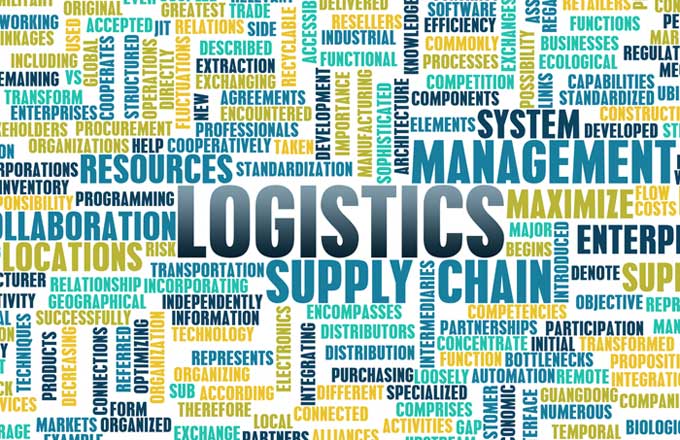
Today, the terms shipping and logistics management along with SCM are used interchangeably. However, to be more specific, SCM incorporates shipping logistics management into its being, as shipping is the transportation of goods from one location to another.
SCM collaborates with all parties to meet great value and improve efficiency for the end client. This includes suppliers, customers, and partners (such as shipping logistics services) working together to achieve the end goal of a product reaching the customer satisfactorily.
Shipping Logistics management is the part of the SCM process that provides more resource planning and implementation of how, when, and where the product will be located, shipped, among other factors.
Shipping logistics management is not, however, only focused on the shipping part. It includes the numbers crunched with costs, time schedules for employees, and everything else included in the equation to make the order work.
The Difference Between Shipping & Logistics

Logistics incorporates shipping, just as SCM includes logistics. If a person’s job description is to ship something, they must only focus on sending the object and getting it to its final destination.
However, a logistics management company takes into consideration the whole act of shipping something. This means that it covers the basics of supply chain shipping and covers when it will be shipped. Logistics management company also consists of figuring out how it will be shipped and tracking the entire shipment process to reach its destination. Invoice status is a large part of the logistics industry where shipping is concerned.
Shipping Services
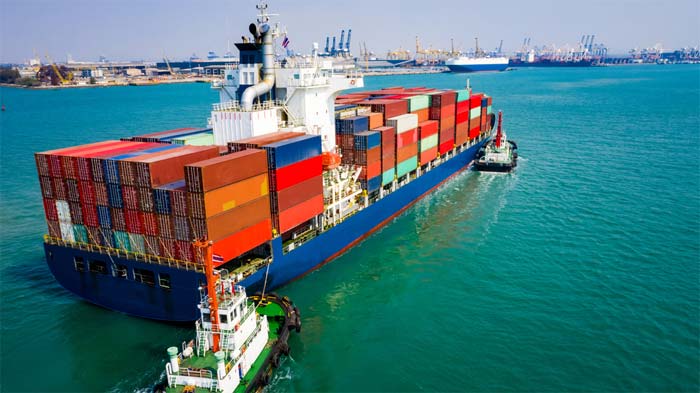
When shipping an item, a company does not usually ship it through its own company. Instead, this is done by a third party, often involved in the shipping industry. That is where shipping services come in, providing a vital link in transporting goods and connecting various parts of the supply chain.
Here is a breakdown of different shipping services that are widely used by companies all over the world:
International Courier
International courier services are an option for people shipping all over the world. They can provide custom shipping modifications for the person needing them and track the shipment to ensure the parcel arrives on time and safely.
FedEx
FedEx is a shipping and logistics company that handles 3.4 million packages daily. They provide logistics delivery within the United States along with international services for shipping both packages and freight shipments abroad.
UPS
UPS, a company like a 3PL, is also a shipping and logistics company that allows customers with an internet connection to create orders, return labels, and mail shipping online. They also provide international freight and package shipping along with United States shipping for freight and package orders.
They partner with the USPS for faster shipping on lighter parcels and mail to ensure customer satisfaction.
DHL
DHL is an international courier and shipping company. They provide fast services along with tracked shipping and easy solutions for logistics delivery, crucial components of part of supply chain management.
Air Freight
For packages that need to be shipped further and arrive as soon as possible, air freight is one of the best ways to do that. Often, air freight provides same-day delivery for customers and results in less transportation tracking.
Sea Freight
When using sea freight shipping, all packages and mail are loaded into containers and put on the vessel. If you require cost-efficient shipping due to high quantities of raw materials or goods, this is a great way to do that.
Door to Door Shipment
This is a shipping solution that uses freight companies. It guarantees that the delivery will be picked up from and delivered to specific addresses in one trip, which is a fundamental aspect of efficiently delivering goods from their point of origin. This takes out the middleman by having a direct pick up to delivery destination option.
Customs Brokerage Service
A customs brokerage service provides a person with an individual or company that will handle importers or exporters when their delivery arrives. It cuts back on time taken going through traditional customs at docks or airports to ensure customers’ quick arrival times.
Shipment Documentation

Proforma Invoice
A Proforma Invoice is made for invoices that are not yet completed. Though there is no proper invoice number, it provides an estimate or quote of how much will be charged or made from the order.
This is usually sent when there is no full invoice created. This is due to a customer wanting to know the price if they were to buy an item. Alternatively, it could also mean that the goods’ value needs to be declared.
LC
An LC is a letter of credit. It is where the buyer tells the seller the details and terms of conditions that go into a specific order. These can be seen as the number of goods within the order, the bill of lading, or even the descriptions of the goods they want to acquire from the seller.
The buyer’s bank sends this letter of credit to ensure that the buyer is in good enough condition to buy the goods they want to acquire, facilitating the financial side of shipping operations. It is a way for sellers to ensure they will get paid when they arrive at the buyer.
Bill of Lading
A bill of lading is a receipt from the handler to the seller to ensure that they got the shipment, a fundamental document in transporting goods.
Bills of lading are very important, as they will show that the handler got all of the goods in the correct quantities and it will be delivered promptly, which is a key document in shipping is the physical movement of goods. It also ensures the seller will be paid and that the buyer will receive their goods.
Logistics Plans, Implements, and Controls
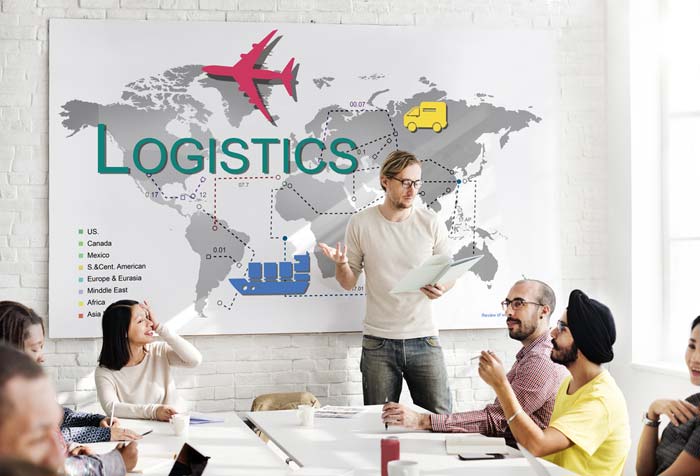
When implementing SCM, shipping logistics must be taken care of, showcasing how logistics needs form a fundamental part of supply chain management.
Planning means figuring out how the goods will move and be stored. It even includes making sure that the documents and logistics information is in the correct order for the business to run smoothly.
Implementing those plans means connecting the goods to the right shipment places and ensuring the storage and movement are safe and ready to go when the shipment arrives.
Controlling is simply ensuring that the implementation and planning stages run smoothly as they go. This is the managing stage of logistics, meaning that the goods must be taken at the right time, transported correctly, and so on.
Types of Logistics Organizations
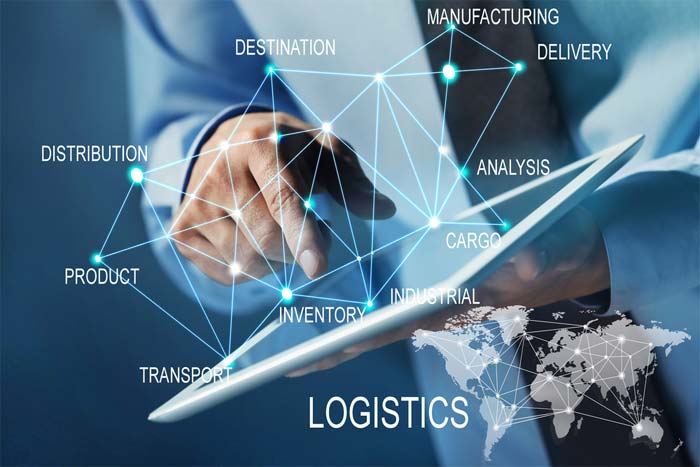
There are many different types of logistics organizations. The primary four types of logistics organizations include:
Production
This logistic type ensures that the goods have been produced correctly, with size, detail, and amount being carefully monitored. This is important because delivery of those products to where they need to go is essential, as that is what leads to the sales portion of logistics.
Sales
This happens once a sale has landed. It is the step where the product goes from the manufacturers’ warehouse to the wholesaler or the customer. At the same time, many things must happen, including the delivery to the wholesaler and, from there, the delivery to the customer.
There is also the option of direct delivery from the warehouse to the customer. This takes out the middleman and will result in fewer sales logistics for this type of delivery.
Recovery
This portion of logistics focuses on what happens to the product after it has been used. If a product comes back, it is then the warehouse’s job to figure out what to do with it. If it can be recovered, then logistics must be in place to do so.
Recycling
This is similar to recovery logistics. If a product has been used and comes back, the seller then has to figure out how to reuse the item if it can not be recovered to its original state.
Transportation in Supply Chain Management
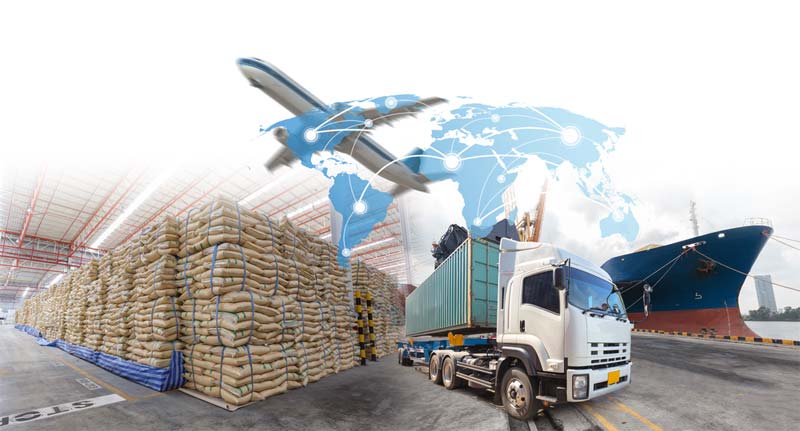
Transportation is a large part of the SCM process. It is what gets the buyer their product from the seller, and many different forms of transportation can be used to do this.
If transportation management is not lined up correctly, then it will have a significant impact on the business. Possible problematic cases include mismanagement, cancellation of an order, or unforeseen circumstances en route.
Ensuring that proper and reliable transportation is lined up will create a smoother way to run a business. It also keeps the cost of shipping for both the buyer and the seller down if the right transportation services are chosen.
Logistics Process Management
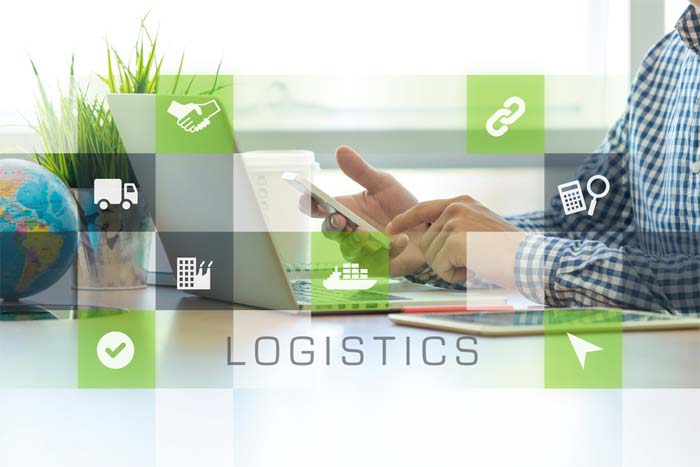
Logistics is the way to process goods and services throughout a company. Without proper management, the company will fail. Having a good logistics process management system will keep the business running smoothly, emphasizing the importance of managing many different types of shipping.
From production, selling, transporting, and all the way up to the successful delivery of the goods and services, none of this could happen without the proper logistics process management. Keeping a close eye on the logistics process reduces the risk of failing to complete an order for a buyer or a seller, showcasing the critical role of logistics refers in supply chain health.
Shipping Lines & Freight Forwarding

Using a shipping line or freight forwarding company can ensure that transportation of goods will run smoothly.
A freight forwarder will line up the shipping for a company. The shipping line will then take the goods and get them where they need to go. However, the freight forwarder stays with the product throughout the whole transportation process to ensure that the goods are safe and are getting where they need to go.
A shipping line usually only offers one transportation line, whether it be air, sea, or land transportation. A freight forwarder often covers more than one of these modes of transportation.
2PL & 3PL Logistics
2PL, or second-party logistics, pick up goods from a certain line of the supply chain, highlighting how logistics is used in the movement of goods. These are usually areas like sea, air, rail, or road. They then take the item and use their transportation methods to get the item where they need to go.
3PL, or third-party logistics, focuses not only on transportation of goods but also on other services like warehousing, customs brokerage, and logistics IT software. It is a more all-encompassing way to oversee a company’s logistics through the SCM processes involved.
Frequently Asked Questions & Answers
Can Shipping and Logistics Help Reduce Costs?
Yes, in logistics, it is easy to overlook various aspects and minute details and go about the process without thinking it through properly. Having shipping and logistics incorporated in the SCM process can reduce costs that may be unnecessary for a company.
When all of the factors are thought through within the SCM process, undesirable problems and complications will not develop. This can include unnecessary costs spent on transportation due to not realizing cheaper options, or even forgetting about necessary things in the order and getting fined for it.
Can Improving Shipping and Logistics Lead to Better Customer Relations?
Ensuring better customer relations is essential for a business to stay afloat, and the best way to do this is through improving shipping and logistics. If a customer can transparently see their order’s process and progress, they will feel better about getting that item.
If there is more transparency on delays or updates on where the order is in live time, the customer will feel they do not need to contact the company for updates. It will make customer relations much more open and satisfactory.
Does Supply Chain Management Allow for Adaptations in Operational Shifts?
If there is a change in the production process or the ability to transport a good, the SCM process allows for adaptations in those operational shifts, helping the business to manage those changes better.
This is because it allows for an easy shift in figuring out the best way to get the goods somewhere. It also increases product flow to get to the needed amount of an item by sticking to the original plans and adapting them to where the needs are, catering to the logistics needs of companies.
What Challenges Are There in Supply Chain Management?
The most common challenges in the SCM process pertain to customer expectations and identifying which part of the supply chain can be competitive or not. Often, companies will invest in supply chain management logistics software without looking over these things, and the system will fail them.
If a company looks at what they need to improve before beginning their SCM process, they will have better luck finding a program that works well.
For example, suppose the company lacks customer satisfaction with transportation times. In that case, they need to look into who they are transporting with and provide insights to customers throughout the transportation process, such as adding tracking to orders.
How Do They Make a Profit?
Companies make a profit through SCM because getting products to customers quickly and efficiently leads to customer satisfaction and loyalty. Without these practices, they would be losing money due to fewer customers seeking out their products or possibly spending more money on the wrong type of shipping for a specific good.
If a company is losing money, that is a fair sign that they need to take a step back and look at their SCM. There are no quick fixes in this case and those that do make quick fixes will see good results shortly, rather than bad results further out.
How Much Time Does It Take to Learn the System?
Learning a system for SCM should not take longer than a quick meeting with employers. Of course, as one spends more time with the system, there will be fewer questions. It is normal to encounter roadblocks upon the first engagement with the system, but overall, it should not be so complicated that it cannot be fully learned within a few weeks, an argument for streamlining the logistics and shipping processes in part of supply chain management.
However, if questions about the same things come up multiple times by multiple people, that is a sign that the SCM has a fault and is not moving as smoothly as it ideally could be
Is My Logistics or SCM in Trouble?
Here are the warning signs that a supply chain management process may not be working correctly:
- High inventory levels
- Inventory shortages
- Little to no data
- High customer turnover
- Higher costs
If a company begins to run into these problems consistently, it is time to look at SCM. High customer turnover most likely means that the company is not focusing on the customer’s end goal, which should always be kept in mind.
Excessive inventory levels or shortages of inventory mean that the chain’s production is lacking, and the logistics are not given complete enough data to keep those things from happening.
High costs on any of the production, shipping, or even selling side of things should show the business that they are not focusing enough on their logistics. The data should show the company the most efficient way of running the business.
What Does a Great Supply Chain Look Like?
If a company has these signs, they are most likely following a good SCM process:
- Consistency
- Lots of data
- Customization and flexibility of processes
- Transparency for customers is essential in the shipping industry for building trust.
Consistency in the supply of goods and the selling of said goods can show that a process is working well because it keeps the supply and demand equation ratio, a testament to the effectiveness of incorporating three types of logistics. This is all thanks to good data that is updated and studied regularly for the best results.
Customizing and making adaptations to the process is also a sign of excellent supply chain management because it shows that the operation can work for all situations.
Lastly, transparency with customers shows that the company is confident in its process and can retain customers better.
What Are the Advantages of Supply Chain Management?
There are many advantages to having excellent SCM. These include better prices on shipping and creating products, a faster way to produce and ship these materials and goods, and lots of data to draw from to make the company better.
With these three things, it is difficult for a business to fail. This is because they lead people to creating a more successful business. Mistakes are a natural part of entrepreneurship and recognizing them early and learning from them is key to any business’s success.
Ultimately, there are no disadvantages to a company if it has a great supply chain management process, incorporating a seamless shipping operations strategy. It can only make them better and grow larger. The only people who should be worried about a company having excellent supply chain management are its competitors.
What is Forecasting?
One of the last steps within supply chain management is seeing what a company will need in the future. This is called forecasting, and it is a very similar process to predicting what the weather will be like, whether in an hour, a week, or a month from now.
With forecasting, a company can look at where they are presently and then see where they can go in the future. This helps with the production of goods and looking at transportation needs for the future, especially if there are changes. These changes could be with the weather, and even political changes, such as embargoes.
Many factors go into forecasting, but the main thing to recognize is that a superior supply chain management will allow for this forecast to change and not harm the company because they have planned out and foresaw this ahead of time.
Q: What is the difference between shipping and logistics?
A: Shipping refers to the transportation of goods from one place to another, while logistics involves the process of managing the movement and storage of goods.
Q: How can I optimize shipping for my business?
A: To optimize shipping, you can explore different shipping options, streamline the outbound and inbound logistics processes, and make use of expedited shipping when necessary.
Q: What are the types of shipping logistics available?
A: The three types of shipping logistics include inbound logistics, outbound logistics, and reverse logistics, each serving a specific purpose in the supply chain management process.
Q: How can I request a quote for shipping services?
A: You can request a quote for shipping services by reaching out to shipping companies directly or using online platforms that provide instant quotes based on your requirements.
Q: What is order fulfillment in the context of shipping and logistics?
A: Order fulfillment is the process of receiving, processing, and delivering customer orders, ensuring that products are shipped to the right destination in a timely manner.
Q: How can warehouse management contribute to efficient shipping and logistics?
A: Efficient warehouse management plays a crucial role in shipping and logistics by ensuring proper storage, organization, and distribution of goods, leading to faster and more accurate order processing.
Q: What are the key aspects to consider when optimizing shipping and logistics for a company?
A: When optimizing shipping and logistics, companies should focus on inventory management, procurement logistics, logistics strategy development, and implementing efficient transportation methods to streamline operations and reduce costs.

What Comes Next?
Choosing your business’s best supply chain management process will ensure that you will have a profitable and successful business for years to come. Looking at logistics and shipping and transportation in supply chain management will show that one cannot exist without the other.
Looking into the process’s entire span, from the goods being made to the goods being delivered at the customer’s door, a business can do nothing but thrive as its supply chain management continues to develop, enabling it to morph into a successful company. Simply look at the data, and the customers will follow.